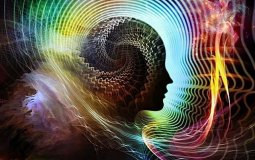ATMA, Sanskrit at man, originally meant `breath`. Later the term came to connote `soul` or `principle of life`. The different systems of Indian philosophy gave it further semantic shades. Nyaya Visesaka considered atma a substance and endowed it with qualities of cognition, pleasure, pain, desire, aversion and effort. Sarikhya recognized it as an object of inference. Bhatta Mimansa held it as the object of internal perception (manaspratyaksa). Prabhakara Mimansa considered it to be the knowing ego revealed in the very act of knowledge and held it to be the subject and not the object of perception.
The Upanisads regarded it as the object of higher intuition and equated it with Brahman, the Impersonal Absolute. Sarikara`s advaita Vedanta held it to be pure consciousness above the distinction of subject and object, knowable by an immediate intuitive consciousness. Ramanuja, however, rejected Sarikara`s concept of atma as pure consciousness and considered it to be nothing but the knower or ego. The Sikh concept is nearest to the Upanisadic Advaitic viewpoint. In Sikh lore, atma is considered to be of the nature of pure resplendent consciousness : man turi joti sarupu hai apna mulu pachhanu 0 my Self ! you are of the nature of light; do recognize your origin (GG, 441). `Light` here signifies consciousness.
The Self (atma) is conscious while the nonself is the object of consciousness. Though itself not an object of consciousness, atma is apprehended by unmediated intuition. “As the Self realizes, enlightenment grows without effort” (GG, 87). In fact, consciousness is directed outwards to objects, inwards to atma. Atma is pure consciousness without any content. Thus the content less consciousness within is atma. Atma is not different from Paramatma, the Cosmic Consciousness, but is only a fraction there of.
Kabir designated it as Ram ki ans (a fraction of Ram). It is the subtlest, purest essence of life: nirmal joti nirantari jatipurest light constantly seen inside (GG, 1039). It remains unperturbedatma ado/u na do/at (GG, 87) through life`s vicissitudes, pleasures and pains. Uninterrupted tranquillity is its hallmark. In its corporeal attire, it passes through cycles of transmigration. Through Divine Grace, it can merge back into the Cosmic Soul (Paramatma) and escape the throes of birth and death again and again. It is equated with Brahman : atam mahi parbrahmu lahante they discover Parbrahma in atma (GG, 276).
The individual soul and the Cosmic Soul are indistinguishable one from the other: atma paratma eko karai (he) reckons the personal soul and Cosmic Soul as one (GG, 661). The atma is Divine, the Divine is atma: atam deu deu hai atamu (GG, 1325). Atma is also equated with the Creator: atam pasara karanhara prabh bina nahi janiai. The Self is the creator of the entire universe, beyond it reckon naught (GG, 846). It is also equated with the immanent God: atam Ramu ravia sabh antari the immanent Self pervades everything (GG, 916). The experiential realization of this identification is the summum bonum of Sikh mysticism.
Atam dhian (self absorption) is the operational mode for such an attainment and atam gian (self knowledge) is its apprehension. The empirical ego (Aaumai) is only an object of consciousness. There must be a witness of the empirical ego, otherwise there can be no unity of apperception in our knowledge of the external objects and that of the empirical ego. Atma, in fact, is such witness. However, atma itself is not an object of knowledge; it is the presupposition of all knowledge the knowledge of objects as well as that of the empirical ego.
Atma is thus the transcendental Self as distinguished from the empirical ego. Intuitive apprehension of this is atam gian and its actual experience is atam claras, vision of the Self. Such experiential absorption in the Self is attended with the highest aesthetic pleasure, atam ras or atam rangaesthetic, because it is based on an experience of ultimate beauty.
References :
1. Sher Singh, The Philosophy of Sikhism. Lahore, 1944
2. Avtar Singh, Et/iics of the Sikhs. Patiala, 1970
3. Jodh Singh, Bhii, Gurmati Nirnaya. Lahore, 1932
4. Nripinder Singh, The Sikh Moral Tradition. Delhi, 1990



